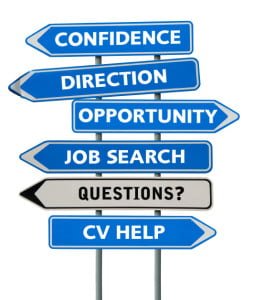
Early-career direction
In career coaching, it is important to help you identify a career direction that will be both successful and purposeful. The Purpose-driven career model will help you to identify a career path with both of these critical elements.
The Purpose-driven career model acknowledges that we have an existential need to have a sense of purpose in life and that we can use our work to contribute to this – having a purpose-driven career inspires us and makes work less of a chore and more of a calling [Purposeful work].

Identifying what gives you a sense of purpose is one key to a satisfying career, however, there are usually several alternative occupations that could be purposeful for you, so the second key is to identify which occupations you might be most successful in. To do this I assist you to identify your strengths, skills that you are good at and enjoy using, types of work you find interesting, and kinds of workplaces that fit your personality style [Successful work].
After deciding on a career direction, I help you to generate an action plan that is resilient and flexible to changes that will occur in the future. This may include everything from deciding on specific training courses through to overcoming self-doubt or risk-adverseness.
. . .
What I offer
I assist you to establish your career requirements, identify career options, assist career decision-making and help you plan your new career path.
1. Career exploration
Together we identify the following career purpose and success ingredients:
• Motivators – the Career Motivators online assessment, unique to Careerology, has been designed to help clarify what inspires you to work and gives you a sense of purpose.
• Values – structured discussion and a priority-finding exercise identifies occupational, workplace, and relational values.
• Personality type – the MBTI online assessment identifies your preferred style of relating to others, information-processing, decision-making and organisational structure. This highly-researched personality tool is useful in indicating possible occupations and options for you, as well as, helping you to understand how to enjoy work more.
• Interests – the Work-interests Inventory, a modified version of Holland’s famous SDS-R career assessment, highlights what interests you about work and assists in brain-storming occupations and options for you.
• Skills – a skill-preference exercise identifies the skills you enjoy most and are best at performing. It also highlights the ‘burn-out’ tasks that you should avoid in any job.

2. Career options identification
The information from the career-exploration phase is then used to help identify good options for:
What work you do (Occupation type) – Which occupation you choose to pursue, e.g. Marketing Manager, Auto Mechanic, Graphic Designer etc
How you work (Career style) – How you choose to balance work with life-style. Will it be full-time work, full-time study, part-time work, part-time study, ‘portfolio’-style career?
Who you work for (Work place) – Different occupations can be very different depending on who you work for; for example, compare a marketing manager for a software company vs a marketing manager for a sport development organization. Also, self-employment could be considered.
We use four different methods to explore career options: Interest-occupation tables, Myers-Briggs occupation tables, Adjacent possibilities and Themes
After identifying options, a period of research and exploration to confirm the viability and appeal of these options is helpful. This may include online research, informational interviewing, shadowing, volunteer work, networking, mentorship and/or business development research.
3. Decision-making
For some people, the first two phases may lead them to an obvious choice. However, for others structured career-decision making can be very useful particularly when decision-making is complicated by influences such as risk-adverseness, high career investment, or a potentially significant occupational change. Your consultant can assist and instruct you with a Career Matrix analysis, a systematic SWOT analysis or a focused discussion.
4. Career Planning
Lastly, I assist you to develop a solid action plan to achieve your career goals. For example, a plan could involve identifying strategies to transition between industries/sectors or occupations, choosing the best training courses, developing job opportunities or overcoming barriers in the way. Outlining possible steps along the way makes goals far more achievable. Our plans are always flexible and can sometimes have multiple possible goals – because life is never entirely predictable.
NUMBER OF SESSIONS: This depends on how much progress you have made with your career decision so far. A single 2-hour session may be adequate. However if you are feeling very lost or stuck, 2 sessions will cover a comprehensive career exploration and decision-making process. Additional sessions may be helpful for clients facing a complex decision, experience low decision-making confidence, and/or need ongoing coaching to put there plan into action.
. . .

Career tension issues
For people currently in a job, we often need to address the dilemma of whether to stay in your current job or make a career direction change. The impetus for career-direction change often starts with the push of job dissatisfaction, dissatisfaction from lack of career growth, boredom, futility, toxic work relationships etc. The duo of job dissatisfaction neighbored with ambition are key Career Drivers, or motivators, pushing you towards changing your career direction. However, often holding you back from change to avoid upsetting the status quo are the Career Inhibitors of apathy, risk-avoidance and loss-avoidance – the instinct to avoid losing what you have already gained and avoiding risk of failure.
This Career Tension (shown in the diagram to the right) is a psychological tug-of-war between Career Drivers pushing you towards career-direction change vs Career Inhibitors holding fast to your current career situation. Resolving this tension is one of the key conflicts that I assist you with to ensure a smooth transition from your current career stage to the next. This may involve examining cognitive biases, risk-evaluations and practical life measures.
As we work to alleviate some of this career tension, we also explore and design a new career path just as described at the top of this webpage. By dealing with both Career Tension and Career Exploration we make sure that the pathway for your career direction change runs as smoothly as possible.
. . .
Career-change example: Paula
CASE-STUDY: Paula was 29 yrs old when she sought career coach assistance. She had been working for the past 4 years as an events manager, but over the past few years she had been developing an increasing sense of dissatisfaction with her job and came to careers consultation wanting to explore different options.
Session 1 – To start off with, Paula was given an explanation of the ‘purpose-driven career’ model to provide her with an overview and understanding of the career exploration process. The remainder of the first session was a structured discussion exploring factors that influenced her career decisions up to that point. This was important in identifying an issue that was impeding her decision-making, namely, significant loss of self-confidence following the cultural shock of moving to NZ from the UK. We also identified influential events and responsibilities, core beliefs, and values in her life. Paula was given a Myers-Briggs personality assessment and the Career motivators assessment to complete at home before the next session a week later.

Session 2 – The second session began by going over the results of the Career motivators assessment which highlighted that ‘relationship building’ and ‘helping others directly’ gave her a strong sense of purpose. We then looked at the Myers-Briggs assessment and saw how her personality affects career decisions – this also directed us to occupation tables that highlighted some specific occupation possibilities for her. Paula was given information about each of the occupations she identified and was instructed on how to comprehensively research occupations. She was tasked with finding out specific details about Human Resource managers, Health Promoters and Interior Decorators. She was also given a Work-interests inventory to complete at home.
Session 3 – In session 3, Paula arrived quite excited about Health Promotion as an occupation, having uncovered a lot of appealing aspects about this area. However, she was still not sure whether it was the best choice for her and agreed to examine this and other options more closely. A preferred skills assessment identified what skills she was good at and enjoyed using and informed us of the skills she should avoid having to use. In the last part of the session, the Work-interests inventory results allowed us to identify some further occupations for her to consider and gave us an understanding of the types of work environments that she would find most interesting.

Session 4 – The ‘purpose-driven career’ model enables the use of a Career Matrix, an in-session exercise that brings together all the information gathered from the previous sessions. The Career Matrix is extremely useful in understanding the strengths and weaknesses of each career option and summarises important aspects of your career decision. Paula completed the matrix and the resultant calculation confirmed that Health Promotion would fulfil her career needs significantly more compared to her current job and the other alternatives. Just as importantly, the matrix showed us why it was a better option based on fulfilling particular needs and values. Finally, career action plans ‘A’ and ‘B’ were generated with short-term, medium-term and long-term goals. Paula was also given information about academic courses that would help her to become a Health Promoter. She was also advised about the NZ health industry and how best to develop job opportunities in that area.
A few weeks later, Paula had enrolled herself for the next intake to study a diploma in health promotion, arranged an internship with Diabetes NZ, and began discussions with her employer about part-time work.
NOTE: Paula chose to attend four 1 hour sessions over 4 weeks – the choice between 1 or 2 hour sessions depends on your personal preference.

Back to home page